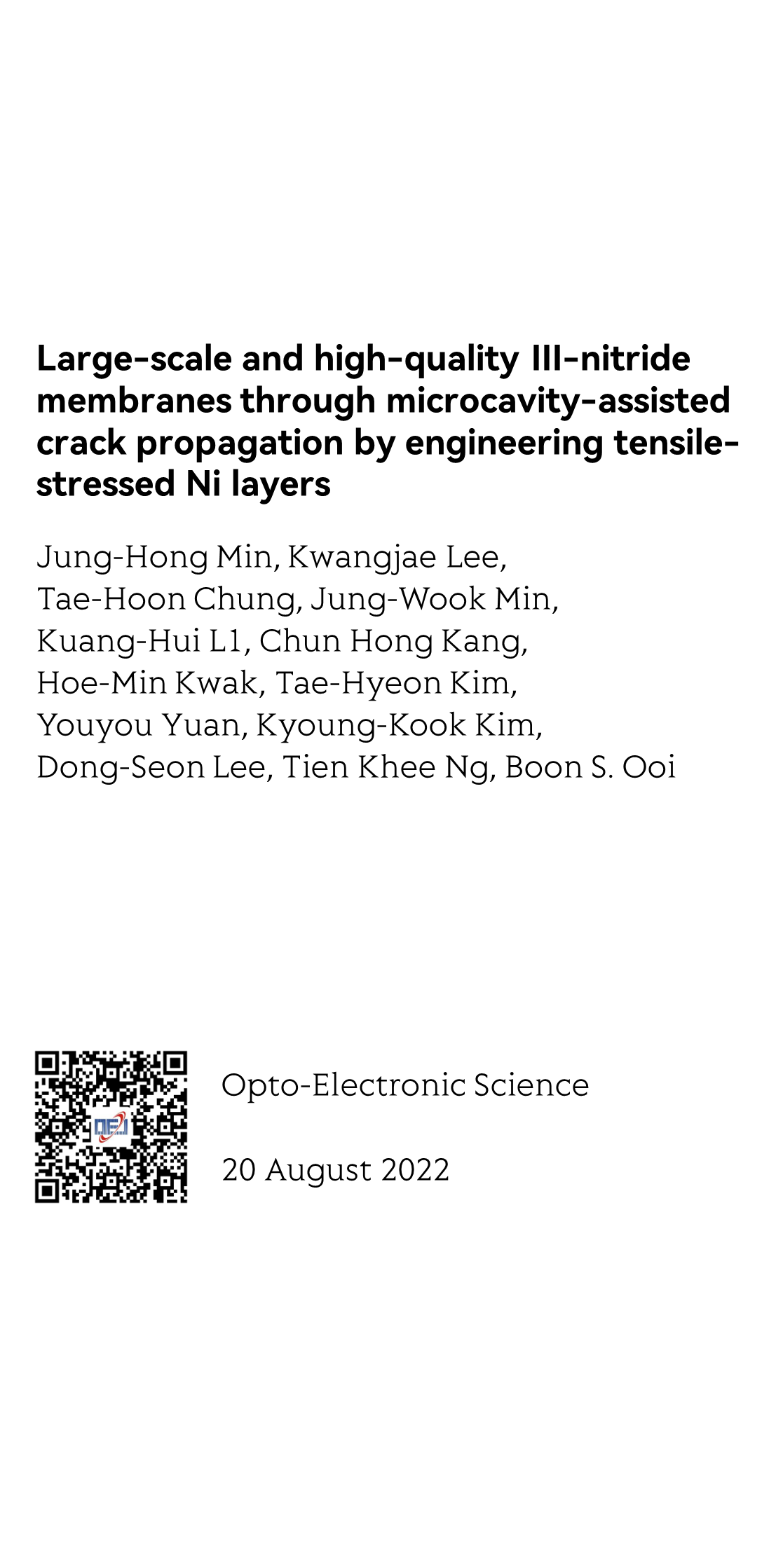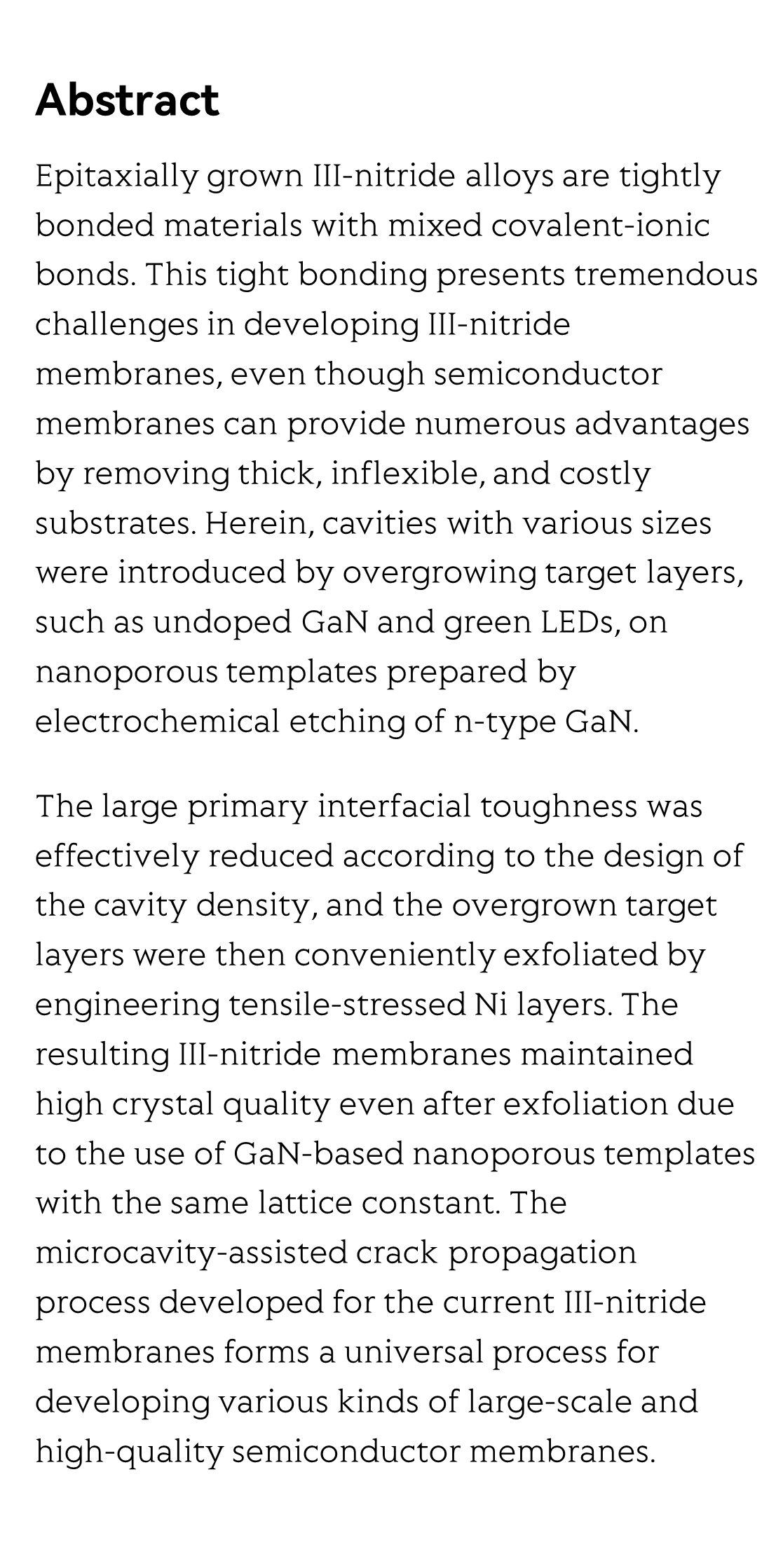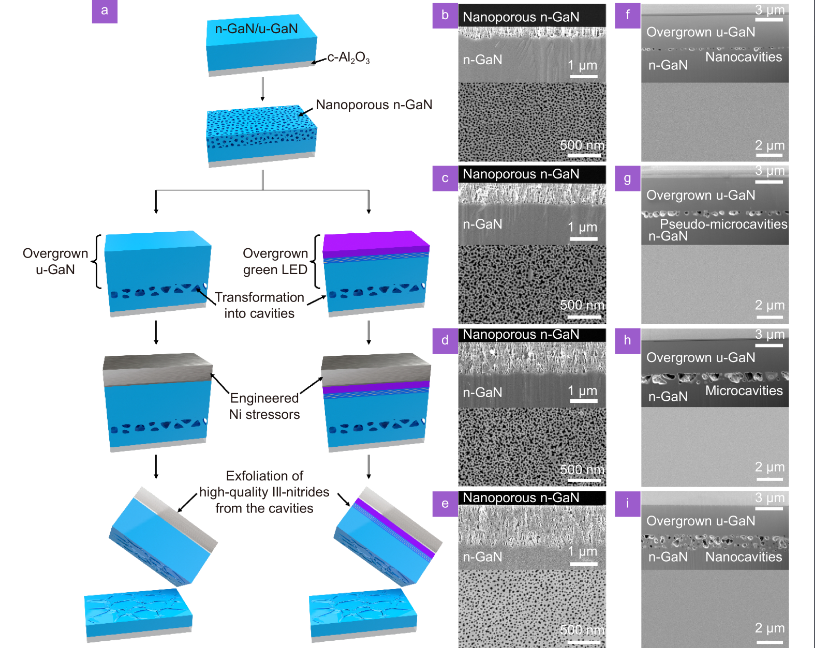(Peer-Reviewed) Large-scale and high-quality III-nitride membranes through microcavity-assisted crack propagation by engineering tensile-stressed Ni layers
Jung-Hong Min ¹, Kwangjae Lee ², Tae-Hoon Chung ³, Jung-Wook Min ¹, Kuang-Hui Li ¹, Chun Hong Kang ¹, Hoe-Min Kwak ⁴, Tae-Hyeon Kim ⁵, Youyou Yuan ⁶, Kyoung-Kook Kim ⁵, Dong-Seon Lee ⁴, Tien Khee Ng ¹, Boon S. Ooi ¹
¹ Photonics Laboratory, Computer, Electrical and Mathematical Sciences and Engineering Division (CEMSE), King Abdullah University of Science and Technology (KAUST), Thuwal 23955-6900, Saudi Arabia
² Department of Electrical Engineering, Stanford University, Stanford, CA 94305, USA
³ Light Source Research Division, Korea Photonics Technology Institute (KOPTI), Gwangju 61007, Republic of Korea
⁴ School of Electrical Engineering and Computer Science, Gwangju Institute of Science and Technology, Gwangju 61005, Republic of Korea
⁵ Department of Advanced Convergence Technology, Research Institute of Advanced Convergence Technology, Korea Polytechnic University, 237 Sangidaehak-ro, Siheung-si 15073, Republic of Korea
⁶ King Abdullah University of Science and Technology (KAUST), Thuwal 23955-6900, Saudi Arabia
Opto-Electronic Science, 2022-10-28
Abstract
Epitaxially grown III-nitride alloys are tightly bonded materials with mixed covalent-ionic bonds. This tight bonding presents tremendous challenges in developing III-nitride membranes, even though semiconductor membranes can provide numerous advantages by removing thick, inflexible, and costly substrates. Herein, cavities with various sizes were introduced by overgrowing target layers, such as undoped GaN and green LEDs, on nanoporous templates prepared by electrochemical etching of n-type GaN.
The large primary interfacial toughness was effectively reduced according to the design of the cavity density, and the overgrown target layers were then conveniently exfoliated by engineering tensile-stressed Ni layers. The resulting III-nitride membranes maintained high crystal quality even after exfoliation due to the use of GaN-based nanoporous templates with the same lattice constant. The microcavity-assisted crack propagation process developed for the current III-nitride membranes forms a universal process for developing various kinds of large-scale and high-quality semiconductor membranes.
Data-driven polarimetric imaging: a review
Kui Yang, Fei Liu, Shiyang Liang, Meng Xiang, Pingli Han, Jinpeng Liu, Xue Dong, Yi Wei, Bingjian Wang, Koichi Shimizu, Xiaopeng Shao
Opto-Electronic Science
2024-02-24





